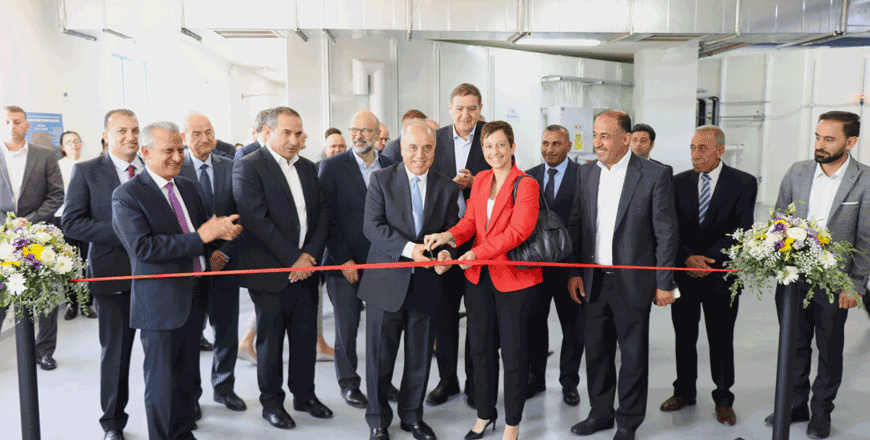You are here
Researchers ‘euphoric’ after SESAME conducts 1st photon beam experiment
By JT - May 23,2023 - Last updated at May 23,2023

Members of the SESAME team pose for a photo (Petra photo)
AMMAN — The Synchrotron-light for Experimental Science and Applications in the Middle East (SESAME) on Monday announced that a group of its engineers and scientists on May 11 successfully delivered the first X-ray photon beam to the centre’s experimental station for the BEATS (BEAmline for Tomography at SESAME) beamline.
During the experiment, one of the beamline detectors obtained more than 1,000 X-ray radiographic images of a rotating test sample in only 12 seconds, SESAME announced on its website.
The data was collected and reconstructed by the high-performance computing facility designed specifically for the beamline and installed at SESAME in 2022, thus allowing for a 3D image of the object.
The BEATS beamline will provide full-field X-ray radiography and tomography: two powerful and non-destructive techniques for 3D imaging and analysis of a large variety of objects and materials. With its non-destructive approach, this new beamline will deliver virtual volume images that are particularly important for the cultural heritage and archaeological communities.
The characterisation of the 3D internal microstructure offered by tomography, is also of paramount importance for an exhaustive understanding of other materials, objects and organisms.
The BEATS beamline may be used in a large range of scientific and technological applications, ranging from medicine, biology, engineering, and materials science to earth and planetary sciences, which is a major asset for researchers in the region.
The layout of the SESAME BEATS beamline was inspired by the tomography beamline at the Swiss Light Source (SLS) and is fully optimised for absorption and phase contrast imaging.
Particular attention was given to preserving the coherence of the X-rays. The X-ray source is a 3T 3-pole wiggler, which significantly increases the photon flux at X-ray energies up to 80 keV, necessary for the investigation of a broad variety of materials and samples.
“We were euphoric observing the first 3D images of BEATS only a few minutes after starting our tests […]” said the BEATS beamline scientist, Gianluca Iori. “It was the realisation of four years of hard work, which made everyone at SESAME extremely proud.”
The beamline was designed and built thanks to a European project that brought together leading research facilities in the Middle East (SESAME and The Cyprus Institute), and European synchrotron radiation facilities: ALBA-CELLS (Spain), DESY (Germany), Elettra (Italy), the ESRF (France), INFN (Italy), PSI (Switzerland) and SOLARIS (Poland).
The initiative has been funded by the European Union’s Horizon 2020 research and innovation programme. The project was coordinated by the ESRF.
The first opportunity to submit a proposal to use the BEATS beamline will open in September 2023.
SESAME is a “third-generation” synchrotron light source that was officially opened in Jordan on May 16, 2017, according to the SESAME website.
It is the first synchrotron light source in the Middle East and neighbouring countries, the website added.
Related Articles
AMMAN — With BEATS, the fifth beamline at the SESAME (Synchrotron-light for Experimental Science and Applications in the Middle East) synchr
AMMAN — An experimental scientific programme using X-ray beamline and an Infrared (IR) beamline was launched on Tuesday, the Jordan Ne
AMMAN — On Monday at 1:21pm, scientists successfully delivered the first monochromatic X-ray beam to the Materials Science (MS) beamline at

















